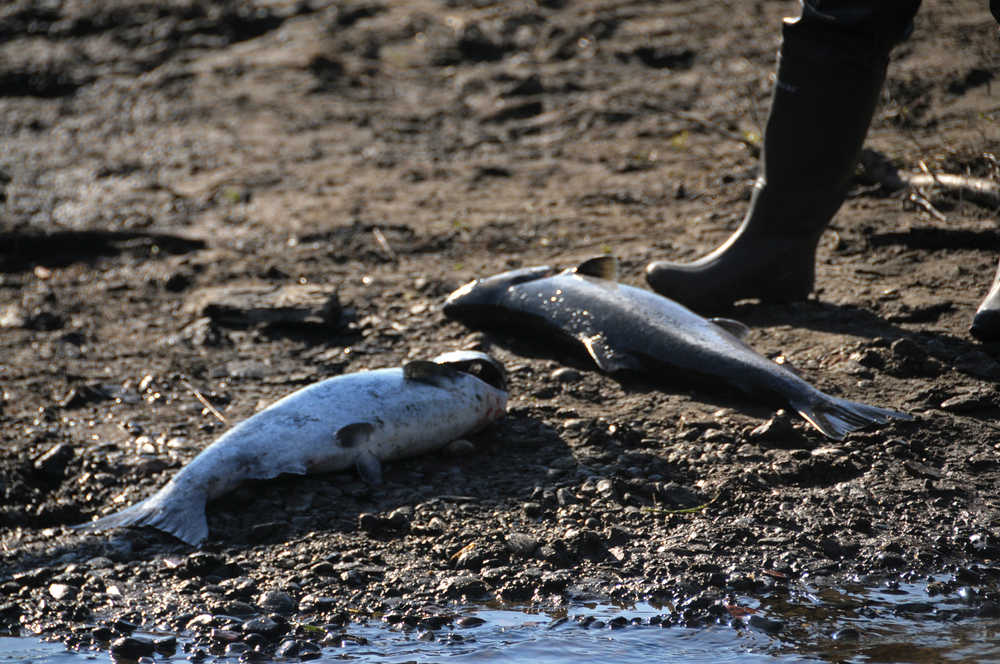Dogs bounded happily across the banks amid smoke billowing from grills near the Ninilchik River as residents and visitors alike tried their hand for king salmon on Saturday.
Tyler and Jacqueline Alward of Homer got their fish around 9 a.m. They’d already caught a few smaller ones and thrown them back that morning, Jacqueline Alward said.
“This one’s probably 18 pounds, and the other one is probably 18 or 19,” she said, nodding down at her and Tyler Alward’s king salmon on the bank.
The Ninilchik River and its neighbor, Deep Creek, opened for king salmon for the first time on Saturday. With the warm holiday weekend in full swing, the banks were packed and the campgrounds full. Boats plied their way into Cook Inlet near the mouth of Deep Creek, casting for halibut and salmon in the marine waters.
Gary Sinnhuber, owner of Silverfin Guide Service, said it was a very good day for fishing on the Ninilchik River. Sinnhuber, who said he has been guiding for 17 years, guides mostly on the Ninilchik and Anchor rivers along with Deep Creek. For a few years while the king salmon runs were lower, the interest was low, but now people are coming back, he said.
“(The Ninilchik River) was crowded on Saturday, a little less on Sunday, and it was a ghost town on Monday,” Sinnhuber said.
The Ninilchik will be open for both wild and hatchery king salmon this weekend and June 11–13, and there will be an opening for only hatchery-produced king salmon July 1–Oct. 31. A clipped adipose fin marks a hatchery-produced king.
For king salmon greater than 20 inches, the limit is one per day and one in possession. After taking a king salmon 20 inches or longer from the Ninilchik River, anglers cannot fish for the rest of the day from the Anchor River, Deep Creek or the Ninilchik.
Sinnhuber said he likes to teach his clients more techniques when he goes out, like how to properly release a fish, how to take a picture with your catch without hurting it and how to care for fishing gear. That’s part of the fun — teaching someone how to properly land a fish and treat it properly, or to teach them how to make sure their gear is clean once they’re finished fishing for the day.
“I like to teach folks how to (fish) correctly and how to take care of your gear,” Sinnhuber said. “It’s basically like, ‘You want your stuff to perform well, so you don’t want to stick it in the sand.’”
Reach Elizabeth Earl at elizabeth.earl@peninsulaclarion.com.

